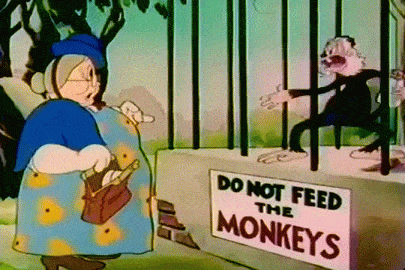A Day in the Zoo
~Geraid Durreil

The author and the text :
Gerald Malcolm Darrell (1 925 ~1 995) was an Engiish zookeeper, conserVaa’onist and author. He founded what is now called the‘ Darrell Wildlife Conservation Trust’ and the ‘lersey 200‘ (now 'Durreil Wildlife Park’) on the Channel Island of jersey in 1958. He is perhaps best remembered for writing a number of books based on his life as an animal enthusiast
The foilowing passage is an extractfrom Menagerie Manor by Gerald Darrell where the author talks about how he set up his own zoo in jersey. helped by a team dedicated to the cause of the animals. The extract describes a typical day in the zoo and the experience of the zoo-workers, and offers us an interesting insider‘s view of the 200

It is one thing to visit a zoo as an ordinary member of the public. it is quite another thing to own a zoo and live In it. It certainly enables you to rush out at any hour of the day or night to observe the animals. it also means you are on duty twentyfour hours a day.
The average zoo day beginsiust before dawn. The sky will be slightly tinged with yellow when you are awakened by the birdsong. You can hear a robin singing. You hear the rich, fruity, slightiy hoarse cries of the touracos, and a joyful blackbird. As the last of his song dies, the white-headed thrush bursts into an excited cry. Looking out into the courtyard, on the velvet green lawns you can see an earnest group of peahens searching the dewy grass. A male peahen is dancing, his burnished tail raised like a fountain in the sunlight.
At eight o’ clock the zoo staff actives. You can hear them shout greetings to each other. Sounds made by their buckets and brushes are heard. You go out mm the cool fresh morning to see if a“ is right with the zoo. ,

The monkeys and other mammals live in the long, two-storied granite house. Here you find a lot of activity. The gorillas have been let out of their cages while the cages are cleaned. They gallop about on the floor with the high spirits 0f children just out of school. They try to wrench the electric heaters from their sockets, or break the fluorescent lights. Stephen, broom in hand, stands guard over the apes. inside the gorilla’s cages Mike, plump and ever-smiling, is busy along with Jeremy. They sweep up the mess on the floor and scatter fresh white sawdust. Everything, they assure you, is all right. All the animals, excited and eager at the start of a new day, bustle about the cages. Etam, the black Celebes ape, clings to the wire, baring his teeth at you in greeting.
Upstairs in the house, the parrots and parakeets salute you with a cacophony of sounds. Suku, the grey parrot cries, “I’m a very tine bird.” A host of quick-footed, bright-eyed mongooses patter busily around their cages. The hairy armadillo lies on its back, paws and nose twitching.
You pass slowly down the house to the big cage at the end where the touracos now live. The male, Peety, I had reared while in West Africa. He peers at you from one of the higher perches. Then, if you call to him, he will fly down and land on a perch nearest to you. Then he will throw back his head and give a husky cry, “Caroo...Caroo... caroo... coo....coo...coo..."
You come out of the birdhouse, then walk to the reptile house. Here, in a pleasant temperature of eighty degrees the reptiles doze. Snakes regard you calmly with lidless eyes. Frogs make gulping sounds; lizards lie draped over rocks and tree
trunks.
At ten o’ clock the zoo gates open and the first rush of visitors arrive. As they come flooding into the grounds, everyone has to be alert. This is not to ensure that the animals do not hurt the people, but to make sure that the people do not hurt the animals. If an animal is asleep, they want to throw stones at it or prod it with sticks to make it move. We have found visitors trying to give the chimpanzees lighted cigarettes and razor blades. The uncivilized behaviour of some humar beings in a zoo has to be seen to be believed.

Towards evening the visiting crowd thins out. The slanting rays of the sun light the cage where the crowned pigeons live. As the light fades, the robin ceases to sing and flies off to roost in the mimosa tree. The white-faced owls that have spent all day pretending to be grey tree stumps, now open large golden eyes, Shadows are creeping over the flower beds and rockery. There is a sudden chorus
from the chimpanzee’s bedroom. You know they are quarrelling over who should have the straw.
As you lie in bed, you watch through the window the moon separating itself from the shadow of the trees. You hear the lions cough. Soon it will be dawn and the chorus of birds will take over; the cold morning air will ring with song.
